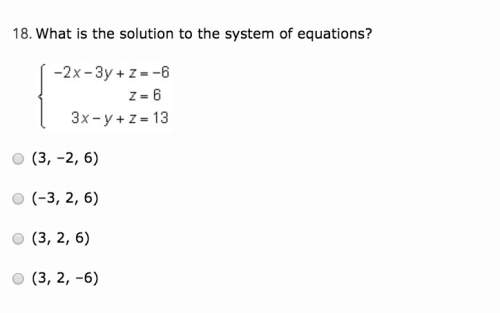
Mathematics, 28.01.2020 05:31 lindseyklewis1p56uvi
The following input-output pairs have been observed during the operation of a linear system: x1(n) = f−1; 2; 1g ! t y1(n) = f1; 2; −1; 0; 1g x2(n) = f1; −1; −1g ! t y2(n) = f−1; 1; 0; 2g x3(n) = f0; 1; 1g ! t y3(n) = f1; 2; 1g a) suppose the input signal is x(n) = (n), what is the resulting output signal? b) determine whether the system is time-invariant. justify your answer.

Answers: 1


Another question on Mathematics

Mathematics, 21.06.2019 21:00
Gabriel determined that his total cost would be represented by 2.5x + 2y – 2. his sister states that the expression should be x + x + 0.5x + y + y – 2. who is correct? explain.
Answers: 3

Mathematics, 22.06.2019 01:30
If you were constructing a triangular frame, and you had wood in the length of 4 inches, 4 inches, and 7 inches, would it make a triangle? would you be able to create a frame from these pieces of wood?
Answers: 2

Mathematics, 22.06.2019 01:50
Thomas is using a drawing program to complete a construction. which construction could he be completing? two perpendicular lines are drawn. inscribing an equilateral triangle in a circle inscribing a square in a circle inscribing a regular pentagon in a circle inscribing a regular hexagon in a circle
Answers: 1

Mathematics, 22.06.2019 03:00
Graph the equation 8x - 4y = 56. then, trace the graph to find the missing value in the coordinate pairs below: (-10, 140 ) (0, ) (2, ) (4, ) ( , 0)
Answers: 2
You know the right answer?
The following input-output pairs have been observed during the operation of a linear system: x1(n)...
Questions

Mathematics, 03.03.2021 01:00

Mathematics, 03.03.2021 01:00







Mathematics, 03.03.2021 01:00


Mathematics, 03.03.2021 01:00

Mathematics, 03.03.2021 01:00




History, 03.03.2021 01:00



Business, 03.03.2021 01:00




